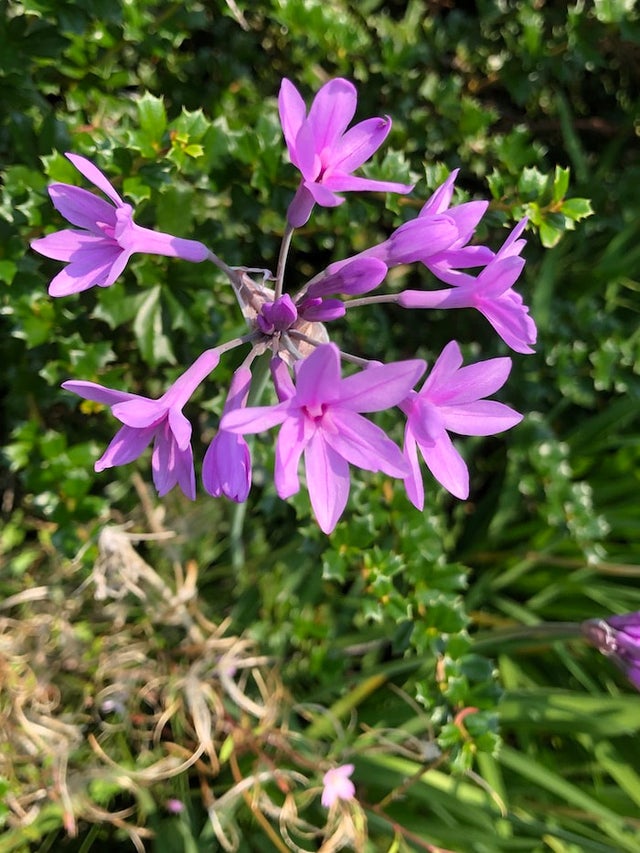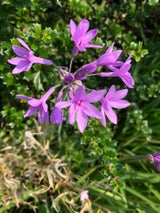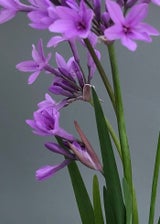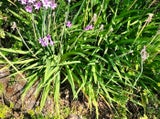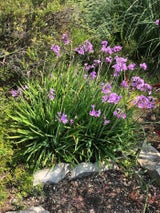- In the Garden
- >
- Gardens
- >
- Gardens R-Z
- >
- Southern Hemisphere Garden
- >
- Tulbaghia violacea
Tulbaghia violacea
Common name: Society garlic
Tulbaghia violacea, native to the rocky grasslands of southern Africa, is a drought-resistant, tender perennial. In our area it is tread as an annual. T. violacea likes full sun, but can grow in part shade, though the flowers will be fewer.
T. violacea has umbels of small, sweetly scented, lilac-pink flowers. These flowers are tubular and flare open to six-pointed stars. Bloom time is July to September. The flowers are rich in pollen and nectar and loved by bees and butterflies. It has narrow, gray-green, chive-like foliage. Both flowers and leaves are edible and may be used in soups and salads. The fruit, a triangular capsule, splits open when ripe to release the seeds.
Society garlic leaves and rhizomes give off a garlicky smell when bruised or cut, but the plant is not in the same genus. Garlic belongs to the Allium genus. Both however, belong to the Amaryllis family (Amaryllidaceae). T. violacea was given the common name 'society garlic' because the garlic flavour does not linger on a person's breath like true garlic and therefore could be eaten at high society functions.
The genus name Tulbaghia honours Rijk Tulbagh, who was Governor of the Dutch Cape of Good Hope Colony in the 1700s. The specific epithet means 'violet coloured'.
Traditionally, T. violacea was planted around the house to deter snakes, and pests such as fleas, ticks, and mosquitoes. It has also been used as an herbal remedy.
Tulbaghia violacea received the RHS Award of Garden Merit in 2012. It can be found in the Southern Hemisphere Garden in Bed 57 which overlooks Livingstone Lake.
Text and photos by Kumi Sutcliffe
